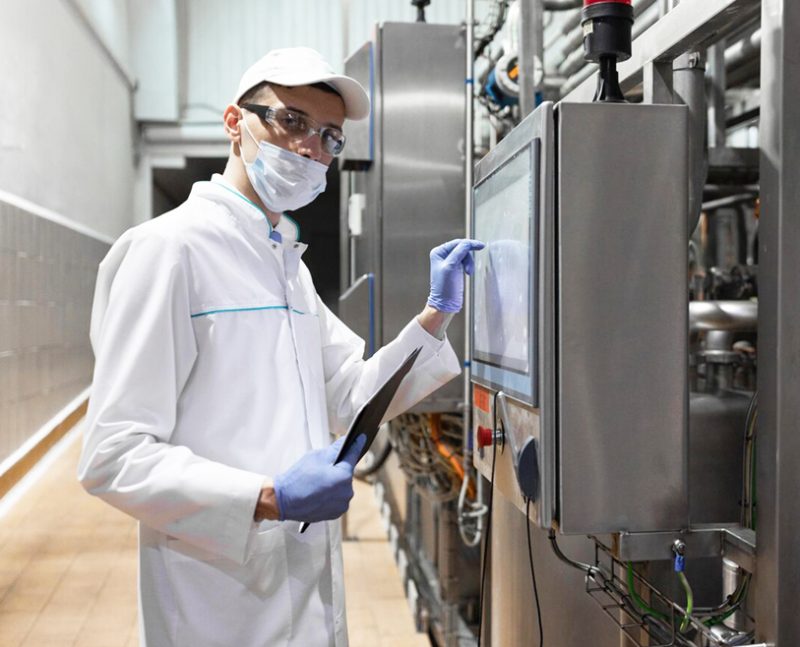In industrial automation—where production lines run 24 hours a day, 7 days a week—downtime costs thousands of dollars per minute. And at the center of these workflows are Industrial Touchscreen Panels—the interface that lets operators monitor machinery, adjust settings, and troubleshoot issues. But standard touchscreens can’t keep up: they overheat during non-stop use, glitch in dusty or wet environments, or fail after months of heavy operation. This is why 24/7 stable Industrial Touchscreen Panels are non-negotiable for automation. Built with rugged components, heat-resistant designs, and fail-safe features, they deliver consistent performance even in the harshest industrial conditions. This guide breaks down what makes these panels “24/7 stable,” how to choose the right one for your automation system, and how to maintain their reliability—helping you keep your operations running without interruptions.

What Makes Industrial Touchscreen Panels 24/7 Stable?
24/7 stability isn’t just a marketing claim—it’s the result of intentional design choices that address industrial automation’s unique challenges. Below are the core factors:
1. Rugged Hardware for Continuous Use
Industrial environments demand hardware that can handle non-stop operation and abuse:
Industrial-grade components: Unlike consumer touchscreens (which use cheap capacitors and chips), stable Industrial Touchscreen Panels use components rated for 100,000+ hours of continuous use (equivalent to 11+ years). This includes long-life LEDs for backlighting and corrosion-resistant circuit boards.
Heat management: 24/7 operation generates significant heat—stable panels use either:
Passive cooling: Thick aluminum housings that dissipate heat without fans (ideal for dusty environments where fans clog).
Active cooling: Industrial-grade fans with dust filters (for larger panels or high-temperature areas) that run quietly and last 50,000+ hours.
Vibration resistance: Most automation setups (e.g., assembly lines, packaging machines) produce constant vibration. Stable panels meet IEC 60068-2-6 standards, with shock-absorbing gaskets around the screen and internal components to prevent loose connections.
2. Environmental Protection (Dust, Water, Chemicals)
Industrial floors are messy—24/7 stable Industrial Touchscreen Panels are built to withstand contaminants:
IP rating: Look for IP65 or higher—this means the panel is fully dust-tight (no dust enters to damage internal parts) and can handle low-pressure water jets (for cleaning). For wet environments (e.g., food processing), opt for IP67 (submersible in 1m of water for 30 minutes).
Chemical resistance: The screen’s surface and housing resist oils, coolants, and cleaning solvents (common in manufacturing). This prevents discoloration, cracking, or short circuits from accidental spills.
3. Fail-Safe Features to Avoid Downtime
Even the most rugged panels need backups to stay online 24/7:
Dual power inputs: Many stable panels have two power ports (e.g., 24V DC and 120V AC). If one power source fails, the panel switches to the other automatically—no downtime.
Auto-recovery: If the panel glitches (e.g., due to a power spike), it restarts and restores the last used interface within 10 seconds—no manual intervention needed.
Error logging: The panel records issues (e.g., “Overheating at 3 AM”) to a local or cloud log. This lets maintenance teams fix root causes (e.g., clean a blocked vent) before they cause full failures.
How to Choose 24/7 Stable Industrial Touchscreen Panels for Automation
Not all “industrial” panels are 24/7 ready—follow these steps to select the right one:
1. Match to Your Automation Environment
Your panel needs to handle your specific industrial conditions:
Temperature range: For cold warehouses (-20°C) or hot factories (60°C), choose panels rated for -30°C to 70°C. Avoid panels with narrow ranges (e.g., 0°C to 50°C)—they’ll fail in extreme shifts.
Contaminants: In dusty environments (e.g., metal fabrication), pick IP65 panels with passive cooling (no fans to clog). In wet areas (e.g., beverage production), go for IP67 and chemical-resistant surfaces.
Vibration level: For high-vibration setups (e.g., automotive stamping lines), confirm the panel meets MIL-STD-810H (a stricter vibration standard than IEC 60068).
2. Check Compatibility with Your Automation System
The panel must work seamlessly with your PLCs, sensors, and software:
Protocol support: Ensure it works with your automation protocols (e.g., Modbus TCP, Ethernet/IP, PROFINET). Most stable panels support 5+ protocols to avoid compatibility issues.
Software integration: If you use HMI software (e.g., WinCC, FactoryTalk), confirm the panel is certified to run it without glitches. Certified panels reduce crashes during 24/7 use.
Mounting options: Choose a mount that fits your setup—panel-mount (for control cabinets), open-frame (for machine integration), or desktop (for monitoring stations). Poor mounting causes vibration damage over time.
3. Prioritize Long-Term Reliability (Not Just Upfront Cost)
Cheaper panels may save money now but cause downtime later:
Warranty: Look for 3–5 year warranties (standard for 24/7 stable panels). Avoid panels with 1-year warranties—they often use low-quality components.
Replacement parts availability: Ensure the manufacturer stocks parts (e.g., touch panels, fans) for 5+ years. This lets you repair the panel instead of replacing it if a part fails.
Energy efficiency: Choose panels with low power consumption (e.g., <15W). Lower power use reduces heat generation, extending component life and cutting electricity costs for 24/7 operation.
Maintenance Tips to Keep Industrial Touchscreen Panels Stable 24/7
Even the most rugged panels need care to maintain 24/7 reliability:
1. Regular Cleaning (Prevent Contaminant Damage)
Daily: Wipe the screen with a dry microfiber cloth to remove dust. For smudges, use a cloth dampened with 70% isopropyl alcohol (avoid ammonia-based cleaners—they damage anti-glare coatings).
Weekly: Check vents (for active cooling) or housings (for passive cooling) for dust buildup. Vacuum vents with a soft brush attachment—clogged vents cause overheating.
Monthly: Inspect cables and power connections for looseness or corrosion. Tighten loose cables and clean corrosion with a cotton swab dipped in vinegar (then dry thoroughly).
2. Proactive Component Checks
Every 6 months: Test fans (if using active cooling) for noise or reduced speed. Replace fans if they’re loud—this signals bearing wear, which leads to overheating.
Yearly: Calibrate the touch screen to ensure accuracy. 24/7 use can cause slight drift—calibration prevents operator errors (e.g., missed button taps) that slow workflows.
Every 2 years: Inspect internal components (if accessible) for signs of corrosion or overheating (e.g., discolored circuit boards). This catches issues before they cause full failures.
3. Plan for Downtime (During Scheduled Maintenance)
Even with 24/7 stable panels, schedule occasional downtime for deep maintenance:
Quarterly: Take the panel offline for 1 hour to clean internal vents (if possible) and update firmware. Firmware updates fix bugs that cause glitches during continuous use.
Annually: Use a backup panel during scheduled line maintenance. This lets you test the primary panel’s fail-safe features (e.g., auto-recovery) without disrupting operations.
FAQs About 24/7 Stable Industrial Touchscreen Panels
Q1: Can 24/7 stable Industrial Touchscreen Panels work in outdoor automation setups (e.g., solar farms)?
A1: Yes—look for panels with “outdoor-rated” specs: sunlight-readable screens (1000+ nits brightness), IP67+ ratings, and temperature ranges of -40°C to 85°C. These handle rain, dust, and extreme temperatures.
Q2: How do I know if my current Industrial Touchscreen Panel is 24/7 stable?
A2: Check its specs—if it has 100,000+ hour component ratings, IP65+ protection, and a 3+ year warranty, it’s likely 24/7 ready. If it overheats, glitches, or needs frequent repairs, it’s not stable for continuous use.
Q3: Can I use a 24/7 stable Industrial Touchscreen Panel with my existing PLC?
A3: Almost always—these panels support most industrial protocols (Modbus, Ethernet/IP, etc.). Just confirm the panel’s protocol list matches your PLC’s. If not, use a protocol converter to bridge the gap.
Q4: What’s the average lifespan of a 24/7 stable Industrial Touchscreen Panel?
A4: With proper maintenance, 7–10 years. Components like LEDs and capacitors may need replacement after 5–7 years, but the panel itself can last a decade or more.
24/7 stable Industrial Touchscreen Panels are the backbone of reliable industrial automation—they keep your lines running, reduce downtime, and ensure operators can act fast when issues arise. By choosing panels with rugged hardware, environmental protection, and fail-safe features, and maintaining them proactively, you can avoid costly interruptions.
If you’re unsure which 24/7 stable Industrial Touchscreen Panel fits your automation setup (e.g., need help matching specs to your environment, want to compare warranty options), fill out the form on our website. Our industrial automation experts will analyze your workflow, conditions, and budget to recommend a tailored solution—helping you keep your operations running 24/7 without a hitch.

